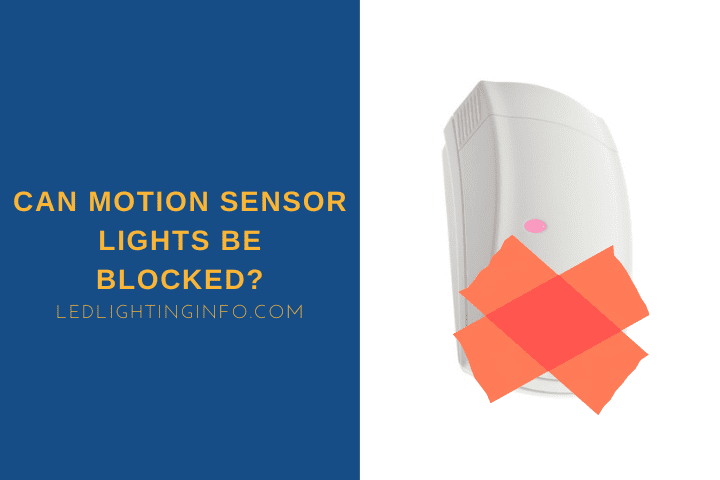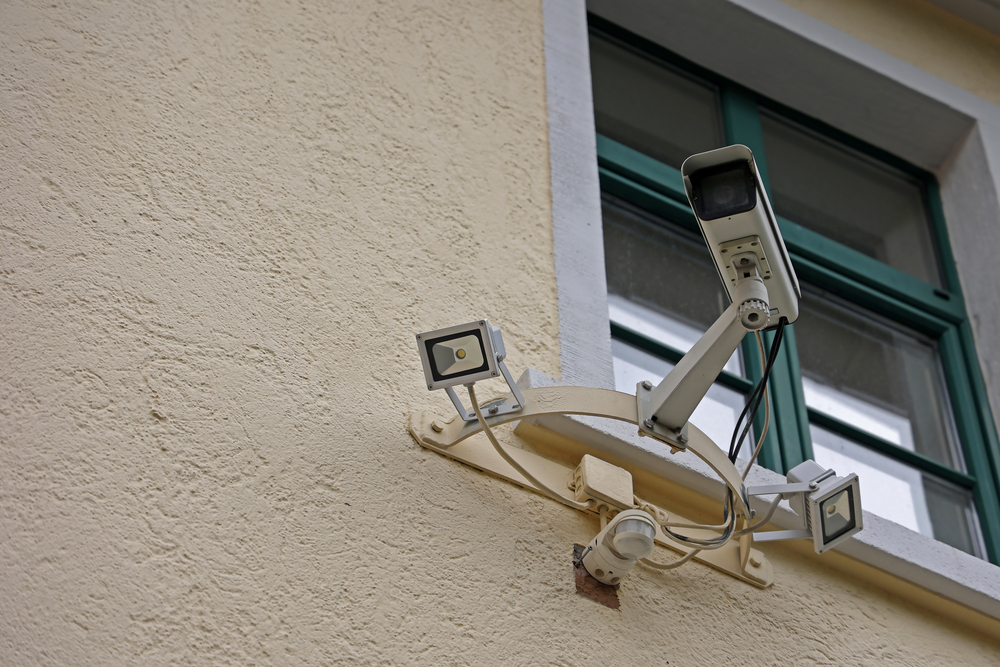Motion sensor lights are generally handy – allowing the lights to be switched on whenever someone gets close so that the space is always safely lit.
But while many motion sensors are wired into a circuit with a master switch, they aren’t always – and what if you don’t want the lights to be triggered for a set amount of time?
Can you block the sensor temporarily to prevent the lights from switching on?
Most motion sensor lights can be blocked simply by covering the sensor, depending on the sensor type. PIR sensors are the most common and easiest to block. Microwaves can be blocked using aluminum foil. Tomographic and ultrasonic sensors can’t be blocked.
To explain further, let’s take a look at:
- What can set off a motion detector
- How you can adjust the sensitivity
- How to block different sensor types
What Can Set Off A Motion Detector?
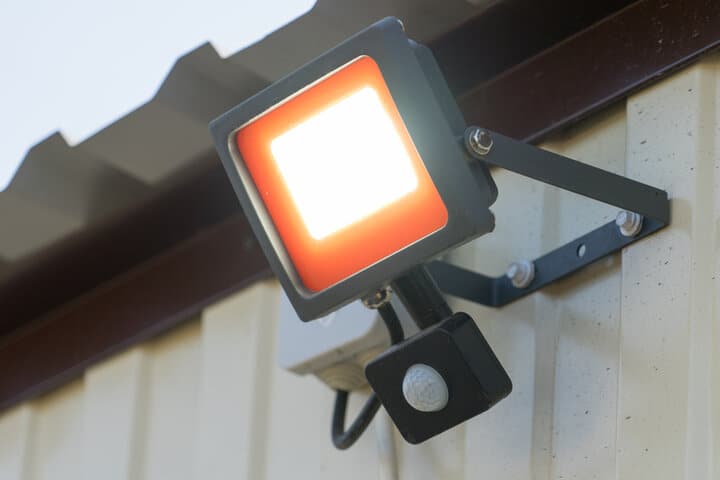
Different types of motion sensors bring many potential things that can set off a motion sensor – often when you don’t want them to.
Here’s a rundown of the most common triggers for motion sensors:
Humans
Motion sensors are designed to activate when a human gets close, so they will be the most common trigger.
Whether the motion sensor is looking for a heat signature, or it is rebounding or blocking other types of radiation (all safe!), then humans will trigger them.
Motion sensors don’t use cameras and so don’t rely on light – a human will always trigger a motion sensor when they enter its field of view, whether it’s the middle of the day or midnight.
Animals
Many motion sensors are triggered by animals, whether that is your pets kept indoors or wildlife triggering sensors placed outside your home.
Not all sensors are triggered by animals, and it depends on the size and type of animal.
Most outdoor motion sensors are PIR which are triggered through infrared heat signals, so an animal would need to be warm-blooded (ruling out many insects) and also big enough to register a temperature change for the motion detector.
Many motion sensors are pet-friendly by using multi-directional sensors and only triggering when a high and low sensor detects something simultaneously – aka a human standing upright.
Wind-Blown Objects
Some sensors can be triggered by objects blown by the wind or air conditioning.
It depends on the type of sensor but is usually limited to indoor sensors using either microwaves or ultrasonic tech.
If you have the windows wide open and a large gust of wind blows the curtains high into the room, or if the air con catches a pile of papers and scatters them, then it’s possible a motion detector could be triggered.
Passing Cars
Cars driving by your home could trigger a motion sensor if it is aimed poorly.
Ideally, a motion sensor shouldn’t cover the nearby road, as too many potential heat signatures could set it off.
If you notice your motion sensor being triggered whenever a hot car engine is driving past, you may need to reposition your sensor.
How Do I Adjust The Sensitivity On My Motion Detector?
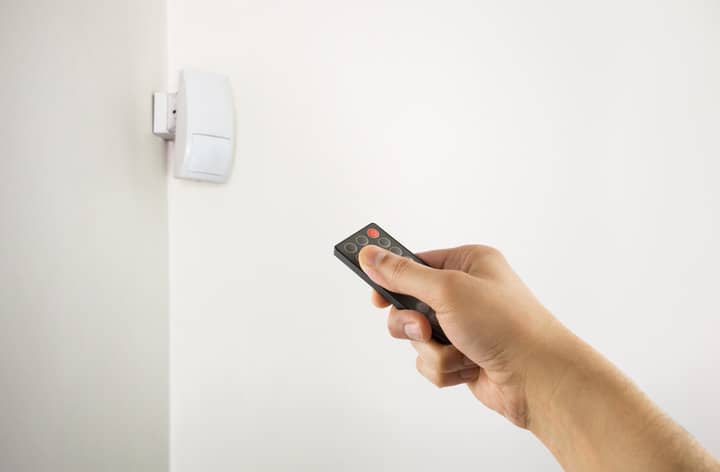
Some motion sensors may be too sensitive for your liking, triggering either when someone walks past the end of your driveway or when a smaller creature enters the field of view.
Many sensors, therefore, can adjust the sensitivity so that only larger objects, or those that spend more time within the field of view, trigger the lights to come on.
This is usually a toggle or switch location on the motion sensor itself.
You might be able to move it manually, or you may need to insert a screwdriver into a slotted dial and rotate it.
Your manual will be able to tell you whether your motion sensor is adjustable and how to do it on your particular model.
Some motion sensors are also smart and can connect to an app on your smartphone or tablet.
For these sensors, the option to adjust sensitivity is usually found in the app, letting you change the settings from anywhere.
Ideal if you’re on vacation and keep getting motion notifications on your phone while trying to relax.
How Do I Block Motion Sensor Lights?
With PIR sensors being the most popular type, I’ll cover those separately below. But here’s a guide to the other types of a motion sensors and how you can block them.
Microwave
A microwave sensor is active, which means it sends microwaves into the room and then detects those bouncing back.
If something enters the room and causes the microwaves to bounce back, it knows there is motion and will trigger the lights.
To block a microwave motion sensor, you need something that can absorb the microwaves rather than rebounding them.
Microwaves can pass through many solids, so you can’t just use anything.
Aluminum foil is a great option. Wrap the sensor in foil, and the microwaves will be completely absorbed, preventing the light from activating.
Tomographic
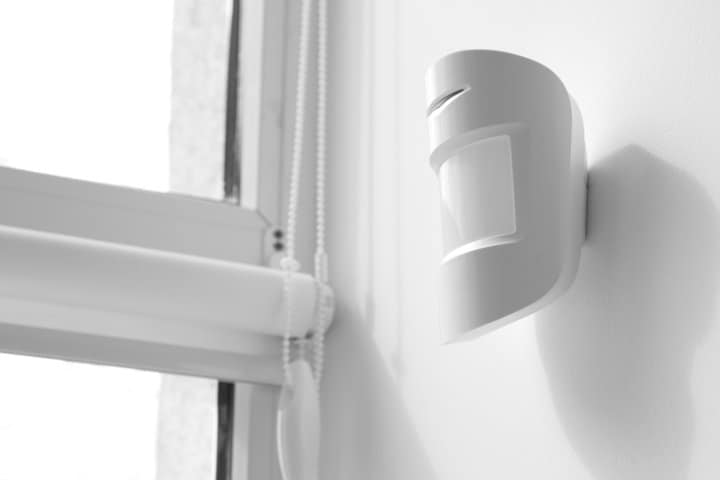
Tomographic sensors create an entire field of radio waves in a room. When something disturbs the radio waves, then the sensor is triggered.
As such, it’s not really possible to block a tomographic sensor.
Aluminum foil will reflect the radio waves, which could confuse the sensor but may trigger it.
It could work, though, so feel free to try.
Ultrasonic
Ultrasonic motion detectors work differently again in that they rely on separate units – an emitter and a receiver.
They send ultrasonic waves between both almost constantly. As soon as anything interferes with the signal, the sensor is triggered.
So again, you can’t really block an ultrasonic sensor.
Doing so would trigger it.
You would need some way of maintaining the signal between the emitter and sensor even when you walk in front of it, and that’s not possible.
So I would suggest installing a master switch to turn the sensor off.
How To Block A PIR Sensor?
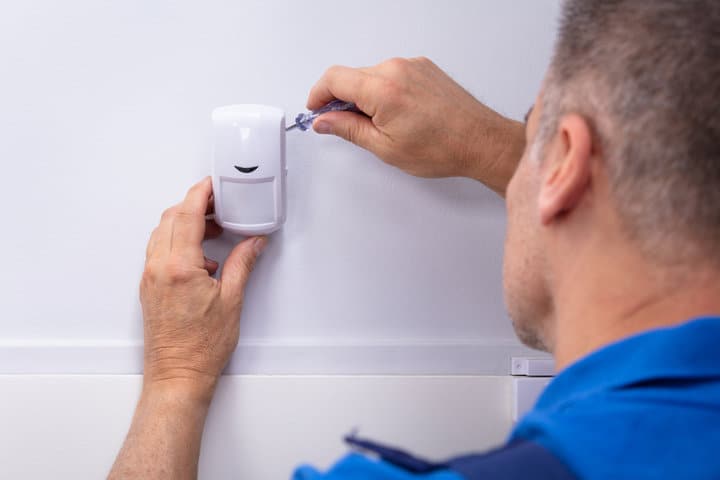
PIR sensors are the most common in homes, and blocking them is usually relatively straightforward.
They work by detecting infrared signals from heat- like what you see on thermal imaging cameras.
So to block the sensor, you need to trick it into thinking there’s no temperature change within its field of view.
You can do this with any insulating material.
Black electrical tape is a popular solution – it’s thick enough to block heat from getting through and is easy to apply.
Glass is another option – it absorbs heat, so placing the sensor behind glass will stop it working.
Final Words
Whether you’re going to be away from home for a few days or carrying out renovations, there are a few different reasons why you might want to temporarily block a sensor that doesn’t have a switch.
Since most homes use PIR sensors, it’s normally quite an easy job.
Microwaves can be blocked easily enough, too, with some household aluminum foil. Still, it may be more difficult if you have a tomographic or ultrasonic sensor.
Have you ever had to block a sensor? How did you do it?

